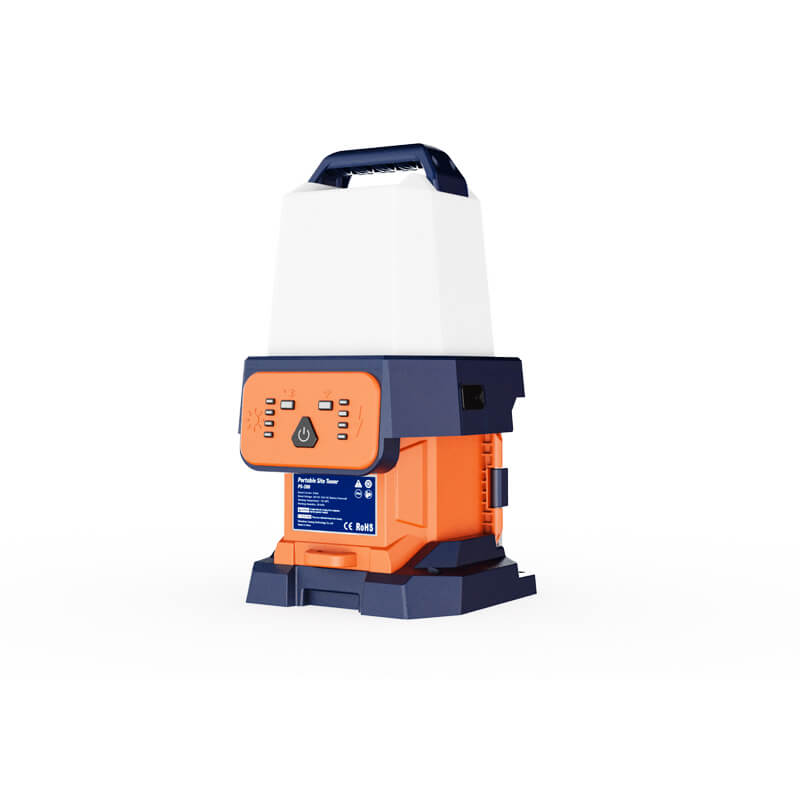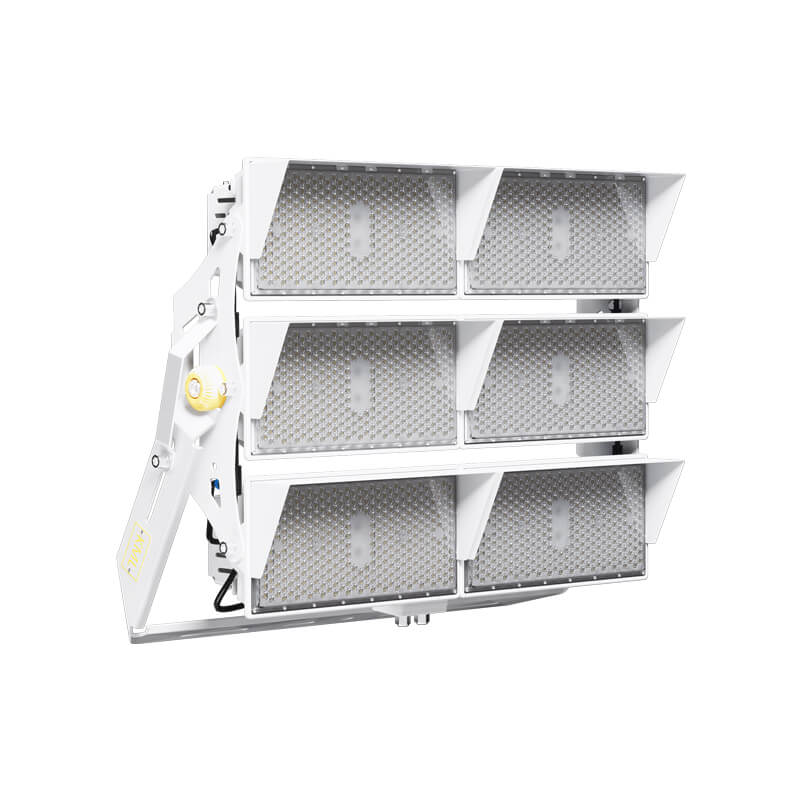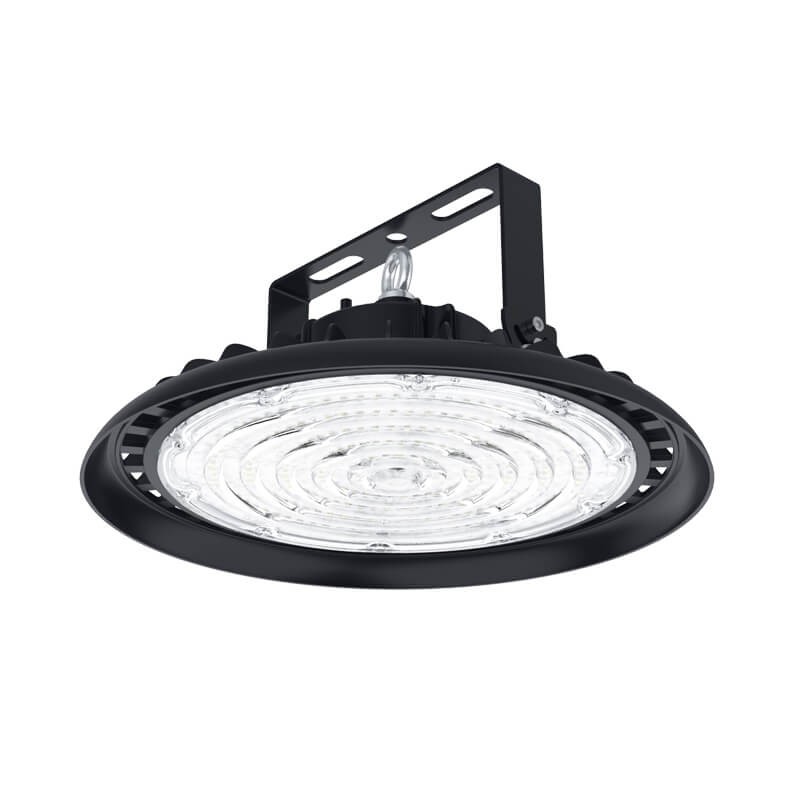Home » Commercial Lighting: Wholesale Custom LED Lights Manufacturer In China
Commercial Lighting: Wholesale Custom LED Lights Manufacturer In China
Murcu’s commercial lighting solutions are designed to meet the diverse needs of various environments, enhancing safety, visibility, and aesthetic appeal. For more information or tailored solutions, feel free to contact us!

Urban
Urban lighting enhances safety and visibility on streets and public spaces. It ensures safe navigation for pedestrians and vehicles during nighttime, contributing to a vibrant and secure urban environment.
Exterior
Exterior lighting highlights architectural features and creates inviting outdoor spaces. It is ideal for illuminating building facades, landscaping, and signage, enhancing the overall aesthetic appeal and visibility of commercial properties.


Parking Lot
Effective parking lot lighting improves safety for customers and staff by reducing accidents and crime risks. Well-lit parking areas ensure that users can navigate safely, enhancing the overall shopping and service experience.
Architectural
Architectural lighting emphasizes the unique features of buildings and cultural institutions. It enhances visitor experiences in places like museums and theaters, while also preserving the integrity of historic buildings through careful illumination.

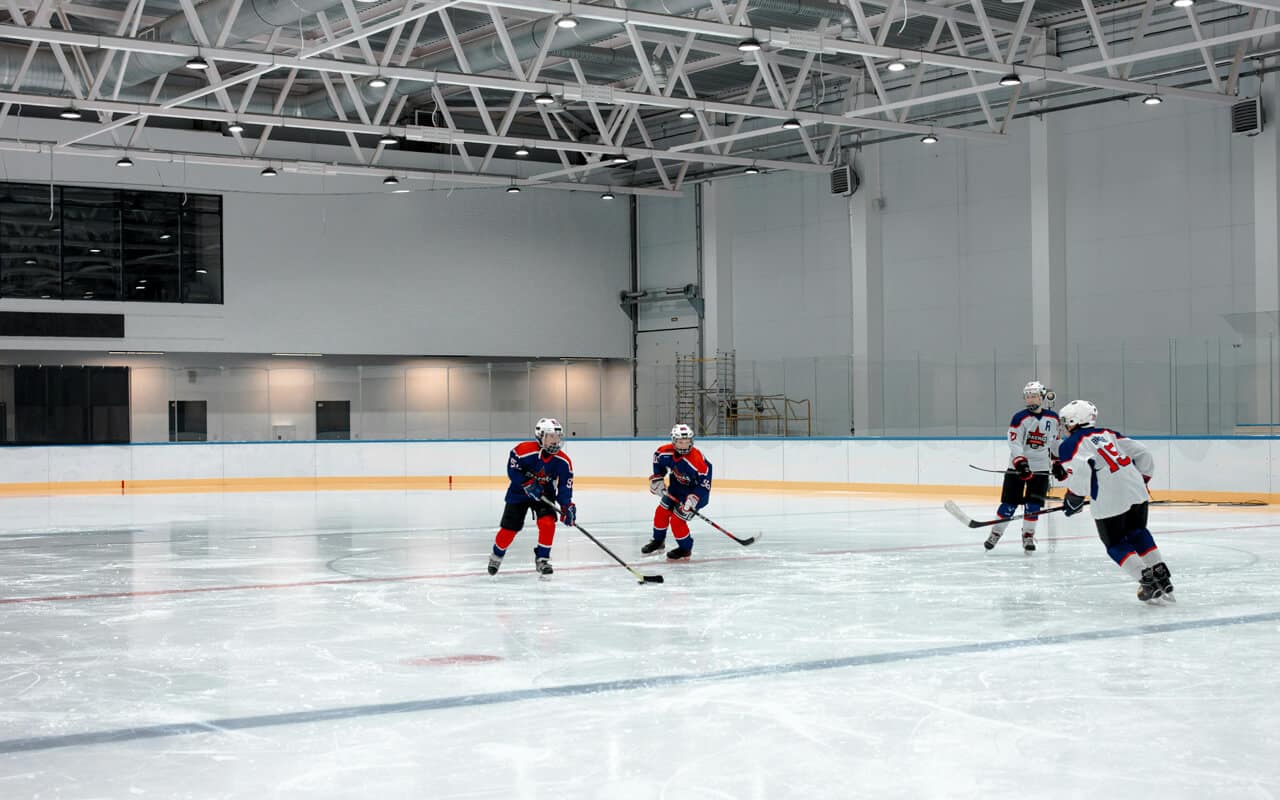
Sports
Sports lighting provides bright, focused illumination for stadiums, arenas, and training facilities. It ensures optimal visibility for players and spectators during events, enabling safe and enjoyable sports experiences.
Event
Event lighting creates the right atmosphere for various occasions, from concerts to corporate events. Flexible and dynamic lighting solutions enhance the overall experience, ensuring that every detail is highlighted and every moment is memorable.

High-Performance Lighting for Professional Spaces
Custom Commercial Lighting Manufacturer In China - Murcu
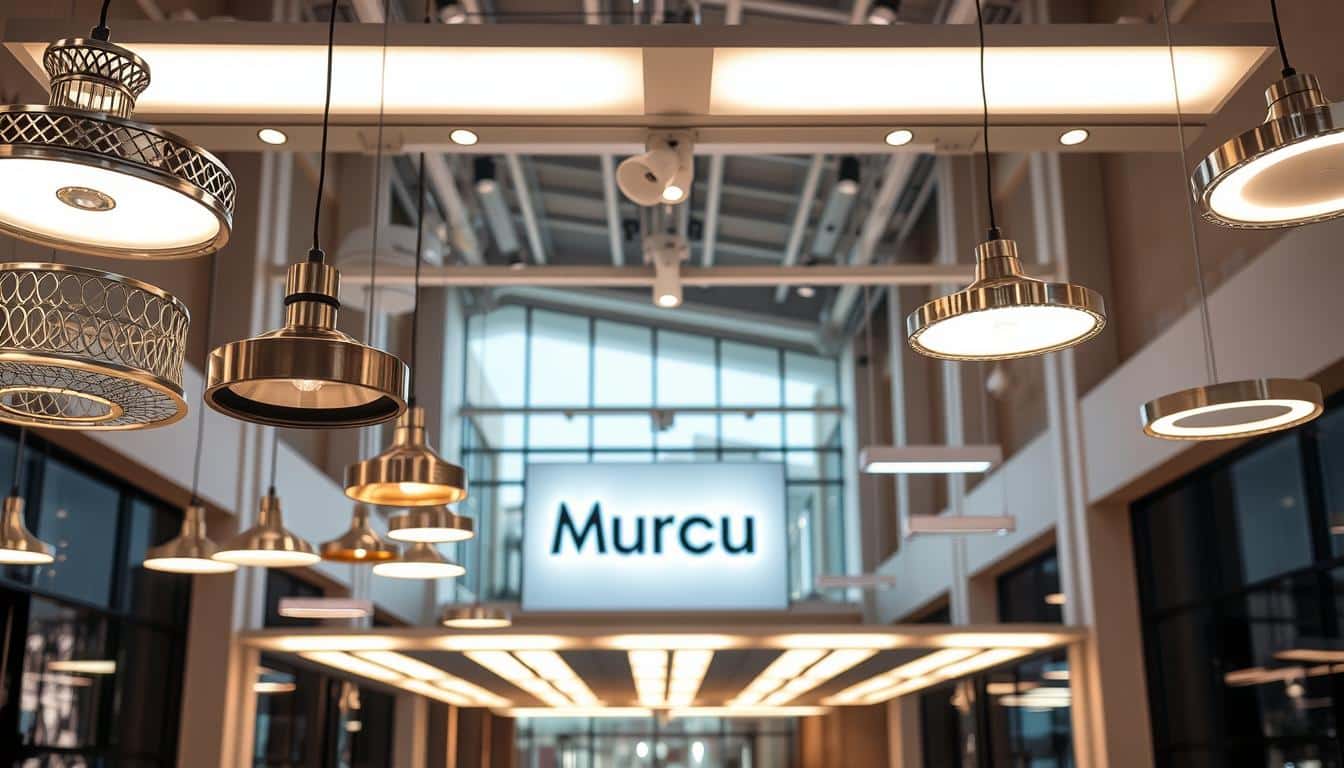
Are you looking for a dependable partner for your business lighting needs? We are one of the best manufacturers of custom LED lights in China. We sell LED lights that are of high quality and can be used in many businesses.
We know a lot about LED lights. We have a wide range of commercial lighting options that will give you the best light and save you money on energy. We are a trusted supplier because our products support the growing use of energy-efficient LEDs.
Key Takeaways
Expertise in making custom LED lights
A lot of different commercial LED lighting options
Good products that save energy
A reliable supplier in the LED lighting business
A trustworthy partner for all your business lighting needs
Introduction to Commercial Lighting
Lighting for businesses is very important. It changes how safe, comfortable, and productive places like stores and offices are. It gives the right amount of light for work, safety, and the right mood.
Commercial lighting does more than just make a room brighter. It makes work easier, keeps people safe, and makes customers happy. Businesses can now pick from a wide range of energy-efficient and customizable lights thanks to LED technology.
There are many kinds of commercial lighting, and each one is good for a different purpose. Panel lights are good for modern offices, and high bay lights are good for big spaces. There are a lot of different types of commercial lighting.
Important Parts of Commercial Lighting:
- Increases productivity and work performance
- Makes the place feel good and the customers happy.
- Keeps places safe and sound
- Uses less energy and is better for the environment
| Lighting Type | Application | Key Benefits |
|---|---|---|
| High Bay Lighting | Warehouses, Industrial Facilities | High intensity, energy-efficient |
| Panel Lights | Offices, Commercial Spaces | Sleek design, uniform lighting |
| Flood Lights | Outdoor Areas, Security Lighting | Bright, wide coverage |
Looking into commercial lighting shows its many sides. Choosing the right lighting for your room is very important. The right lighting can help a lot, whether you want to make your space look better or save energy.
What is Commercial Lighting?
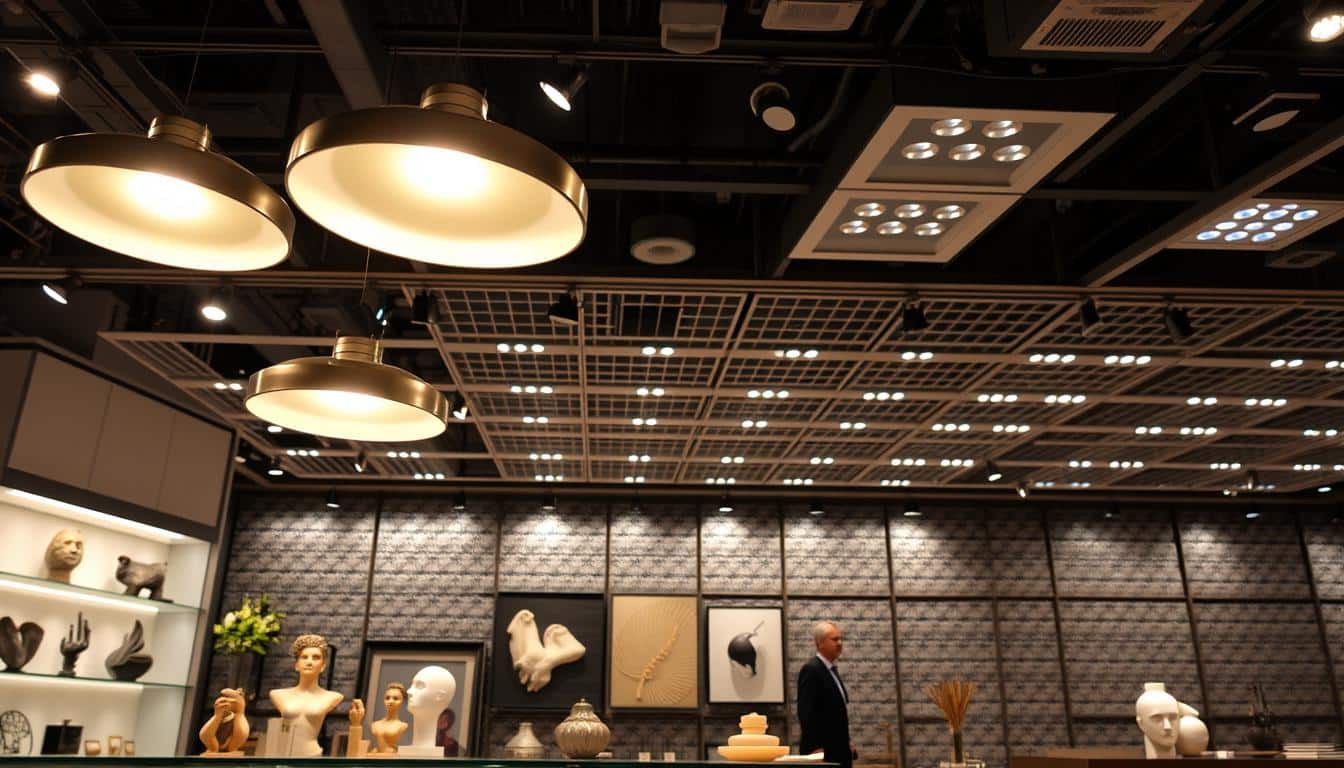
Commercial lighting is very important for the mood, productivity, and safety of a business. People use commercial lighting in places like factories, stores, and offices.
Good commercial lighting does more than just make a room brighter. It makes a place that works for the people who live there. This could mean better visibility, a better look, or more safety.
“Good lighting is a fundamental aspect of a welldesigned commercial space. It can boost employee productivity, enhance customer experience, and even impact sales.”
— Expert in Lighting
There are many types of commercial lighting, such as LED commercial lighting. It’s known for saving energy and lasting a long time. Many businesses choose it for its quality and cost savings.
| Lighting Type | Characteristics | Common Applications |
|---|---|---|
| LED Lighting | Energy-efficient, long-lasting | Offices, Retail Stores |
| Fluorescent Lighting | Cost-effective, wide coverage | Industrial Facilities, Warehouses |
Businesses need to know about the different types of commercial lighting. By picking the right lighting, they can improve their space and cut costs.
Types of Commercial Lighting Fixtures
We have a lot of different types of commercial lighting fixtures for different areas. Our selection fits a range of needs and styles. Each fixture is made for a certain purpose.
High Bay and UFO Fixtures
High bay lights and UFO lights are great for big spaces like gyms and warehouses. From up high, they light up big areas well. This makes sure that the light is even everywhere.
Area and Flood Lights
Flood lights and area lights are great for both inside and outside. They’re great for security, parking, and the outside of buildings. The LED options we have are bright and save energy.
Wall Packs & Exterior Lighting
Wall packs and lights for the outside are put up on walls. You can use them outside, like on walkways. These lights can handle any kind of weather and always give off light.
Lights for Panels, Troffers, and Downlights
Panel lights, troffers, and downlights are popular choices for lighting inside. They work well in stores and offices. These lights are new, come in different sizes, and work with different types of ceilings.
Businesses can choose the right commercial lighting fixtures if they know about the different kinds. This improves both function and energy use.
Lighting Types by Function
To design good commercial lighting, you need to know about the different types of lighting. Our LED lights can do a lot of things. The most important thing is how each type of light works.
Ambient / General Lighting
General or ambient lighting brightens up an entire room. It makes the place bright and comfortable for everyone. This lighting is very important for making customers and employees feel welcome.
Task Lighting
Task lighting is for places where people read or work. It helps your eyes feel better and makes you work faster. Offices and work areas must have good task lighting.
Accent Lighting
Accent lighting draws attention to certain parts or features of a room. It makes things more interesting and beautiful. You can do this with either track lighting or spotlights.
Security & Outdoor Safety Lighting
Outdoor safety lighting and security lights keep places safe. It lights up the outside, which keeps people from getting in. Good security lighting makes it less likely that accidents and crimes will happen.
Businesses can make a lighting plan that works for them by using these types of lights. It improves both the look and function of their space.
Design Principles & Guidelines
It’s not just about turning on lights when you design commercial lighting. It’s about creating a space that looks good and works well. We look at a lot of things when we talk about design principles and rules. These things help make a lighting system that looks good and works well.
Different Commercial Spaces’ Light Levels (Lux / Foot-Candles)
Levels of light are very important in the design of commercial lighting. You can measure the amount of light each space needs in lux or foot-candles. For instance, offices need 300 to 500 lux, but industrial areas may need more.
You should know what your space needs. This helps you choose the right lights. Think about the people who will be using the space, the activities you want to do there, and the mood you want to create.
Color Rendering Index (CRI) and Color Temperature (CCT)
When designing lighting, it’s important to think about the Color Rendering Index (CRI) and Color Temperature (CCT). CRI shows how well a light makes colors look, while CCT is the light’s color, measured in Kelvin (K). The right CCT can make a room feel right, and a higher CRI means better color.
A CRI of 80 or higher is best for business spaces. The best CCT depends on the area. Cool white light is better for offices and stores, while warm white light is better for hospitality.
Glare, Consistency, and Comfort for the Eyes
When designing lighting, glare, consistency, and comfort are very important. Glare can be distracting, and not having a good uniformity can make your eyes hurt. To avoid these problems, it’s important to pick the right light fixtures.
Think about where and how you put lights to make sure you’re comfortable. Glare can be lessened by using fixtures with the right shielding and diffusers. Planning ahead can also help make sure the light is even.
Controls for lighting and flexibility (dimming, sensors, IoT)
Lighting controls make systems more adaptable and save energy. You can change the levels and patterns of light with technologies like dimming, sensors, and IoT-enabled systems. This makes the lighting better and uses less energy.
Using advanced lighting controls can make a room more flexible and responsive. You can change the amount of light depending on who is there, what time it is, or what is going on. This helps both the function and the energy savings.
Application-based Lighting for Commercial Spaces

We design lighting for different types of businesses. Every place needs its own kind of light. This is to make things work better, look better, and be more useful.
Offices and meeting rooms
Lighting is important in offices for both work and comfort. We have LED lighting options that will give you the right amount of light for work, meetings, and breaks. Our lights cut down on glare and make your eyes feel better, which makes them great for offices and meeting rooms.
Spaces for Retail and Display
Lighting in stores serves a purpose and also shows off products. Our store lighting makes things look better, makes displays better, and makes customers happier.
Warehouses, factories, and other industrial buildings
Industrial areas need lighting that is strong, dependable, and can handle tough conditions. Our industrial lighting gives off a lot of light, lasts a long time, and uses less energy. It’s great for factories, warehouses, and more.
Hotels, restaurants, and other places to stay
Lighting in hotels and restaurants sets the mood, makes guests feel better, and shows off the place. Our hospitality lighting can be changed, saves energy, and looks nice. It’s great for hotels, restaurants, and other places where people stay.
We understand that every business space has different needs. So, we provide lighting that makes things better based on the application. Our LED solutions work well in offices, stores, factories, and places for guests. They offer great performance and value.
Cost, Running Costs, ROI & Maintenance
Businesses need to know how much commercial lighting costs. They want to lower their energy costs and keep things running smoothly. You should think about both the initial costs and the ongoing costs and benefits.
Costs Up Front vs. Costs Over Time (LED vs. Traditional)
The cost of lighting can be very different between LED and regular lights. LED lights might cost more at first, but they last longer and use less energy. This can save a lot of money over time.
| Lighting Type | Upfront Cost | Lifespan | Energy Efficiency |
|---|---|---|---|
| LED Lighting | Higher | Longer (up to 50,000 hours) | High |
| Traditional Lighting | Lower | Shorter (around 1,000–2,000 hours) | Lower |
The chart shows that traditional lighting might cost less at first. But because it doesn’t last as long and uses less energy, it can cost more over time.
Payback Time and Energy Savings
The payback period for LED lights is an important factor. It shows how long it will take to get the money back that was spent on it. Businesses can figure out how long it will take to pay back the money they spent by comparing the savings on energy to the cost of the project.
“Depending on how you use it and how much energy it costs in your area, the payback period for LED lighting can be as short as 2–3 years.”
LED lights use a lot less energy. This means that businesses will pay less for energy. LED solutions have this big advantage.
IP/IK Ratings, Maintenance Needs, and Durability
For commercial lighting, upkeep is very important. LED lights last longer and don’t need as much care as regular lights. The IP/IK ratings tell you how well a light can handle the weather.
Picking lights with the right IP and IK ratings makes them last longer. This means that you won’t have to replace or fix things as often.
Don’t forget about durability and upkeep when you think about the cost of lighting. This helps make choices that balance initial costs with long-term savings and efficiency.
Innovations in Commercial Lighting
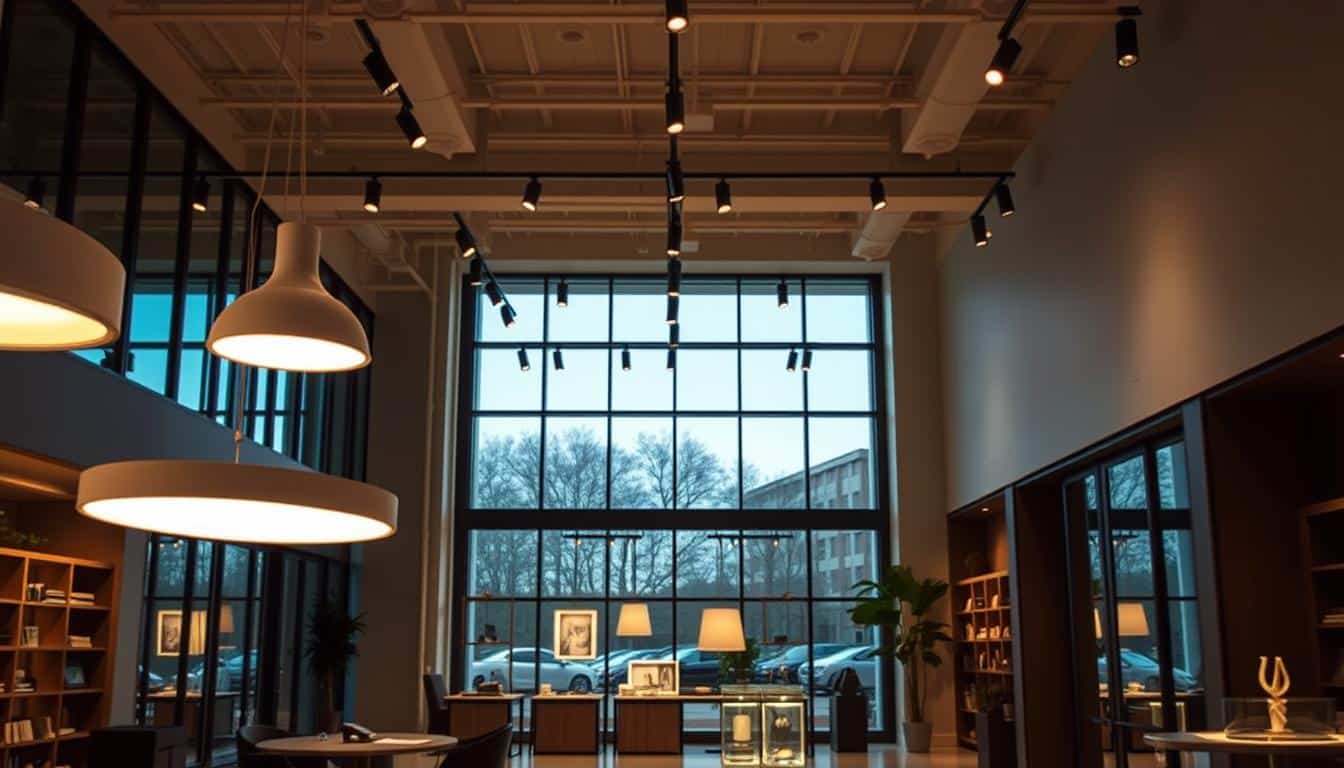
The world of commercial lighting is changing quickly. It’s getting closer to solutions that are good for the planet and make people feel good. This change shows that lighting is more than just light. It’s about making places better for people and less harmful to the environment.
Human-Centric & Circadian Lighting
More and more people are using lighting that is good for people. It tries to make places better for people by copying natural light. This is good for your health and productivity as well as looking good.
This includes circadian lighting. It keeps our bodies in sync with the day and night. This helps us stay alert when we need to and relax when we need to.
Smart Controls, IoT & Networked Lighting Systems
Smart controls and the Internet of Things (IoT) are changing how we turn on and off lights. We can control and watch lights in real time with networked systems. This means we can use less power and keep the lights in better shape.
You can set these smart lights up to work in different places. This saves energy and makes spaces work better.
Sustainable & Energy-Saving Technologies
In commercial lighting, sustainability is very important. LED lights are getting better at being green and saving energy. Daylighting strategies also help reduce the need for artificial light. This is good for the planet and can help businesses save money.
Design Aesthetics & Branding Through Lighting
Lighting is very important for making commercial spaces look good. It can set the mood, show off building features, and show off a brand. By picking the right lights and controls, businesses can create spaces that show off their values and improve the customer experience.
Final Thoughts
Commercial lighting is an important part of making places better for work and play. It makes offices and stores look better, work better, and be safer. Businesses can pick the right lighting if they know about different types of lights, how to design them, and what’s new.
We have the best commercial lighting, including LED options that save energy. A good lighting plan can make places more welcoming and help people work better. This can help a business do well by getting employees to work harder and bringing in more customers.
To sum up, it’s very important to choose the right commercial lighting. It means looking at different kinds of lights, designs, and the newest LED technology. This way, companies can make a space that looks good and works well. It’s all about winning.
Commercial Lighting FAQs
What are the advantages of using LED lights in businesses?
Commercial spaces look great with LED lights. It saves energy, lasts a long time, and can be made in a lot of different ways.
What kinds of lights for businesses are there?
There are a lot of ways to light up. You can pick from area and flood lights, high bay lights, UFO lights, and more. We have different types of lights for different needs, like wall packs, panel lights, troffers, and downlights.
How do I figure out what kind of lighting my business needs?
Think about the kind of space you have, how much light you need, and how you want it to look. Talk to a lighting expert if you’re not sure.
What does the color rendering index (CRI) mean for commercial lighting?
CRI shows how well a light source can show colors. A high CRI is important for color accuracy in places like stores and hotels.
How can I save money on energy with commercial lighting?
Use LED lights that save energy and smart controls. Also, plan your lights so that they use less energy. This will save money and be good for the environment.
What are the newest styles in business lighting?
Now, we look for lighting that is good for people, smart, and good for the environment. We also care about how it looks.
How do I find a good commercial lighting supplier and installer?
Check out the quality of their products, warranties, and customer service. Also, look at how they install things to make sure the project goes well.
What are the rules and standards for lighting in businesses?
Commercial lighting must follow rules for safety, energy use, and being outside. These make sure that things are safe and work well.
Can LED lights be added to old commercial lighting?
Yes, you can update a lot of systems with LED lights. It’s a smart way to save money and energy.
What can I do to make sure my commercial lighting system is well taken care of?
Check your system often and keep it clean. Replace parts as needed. This keeps your lighting working well for a long time.
